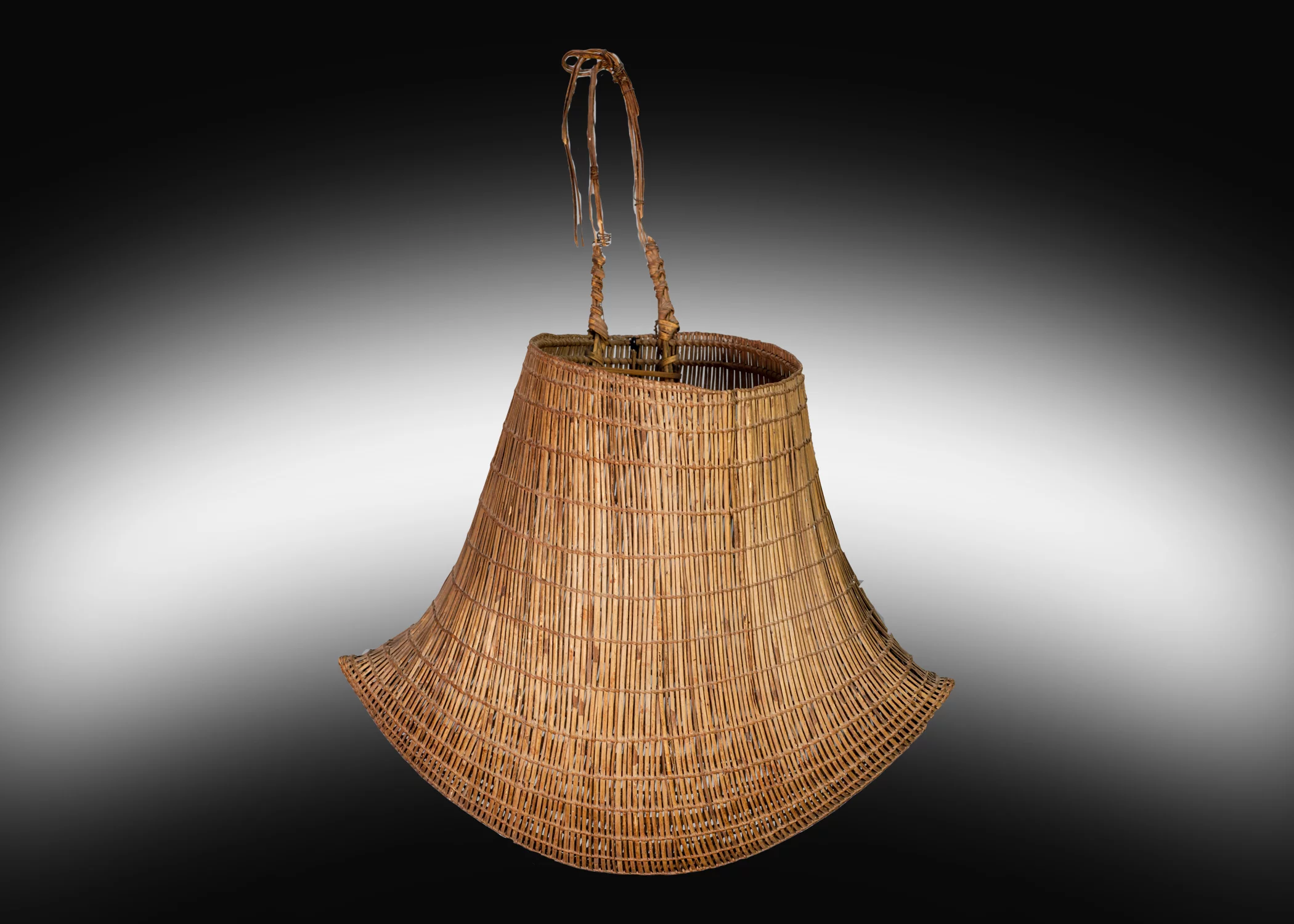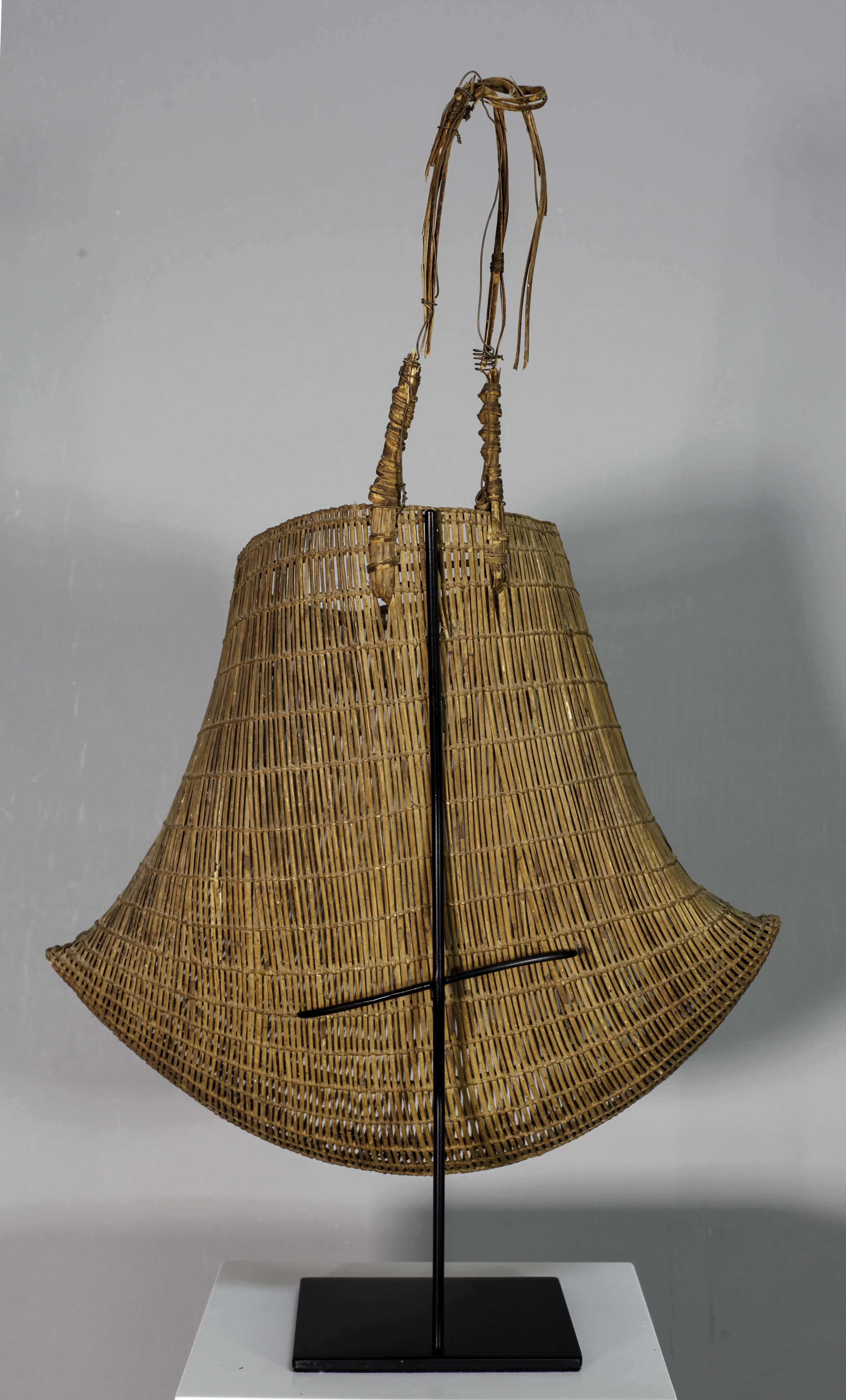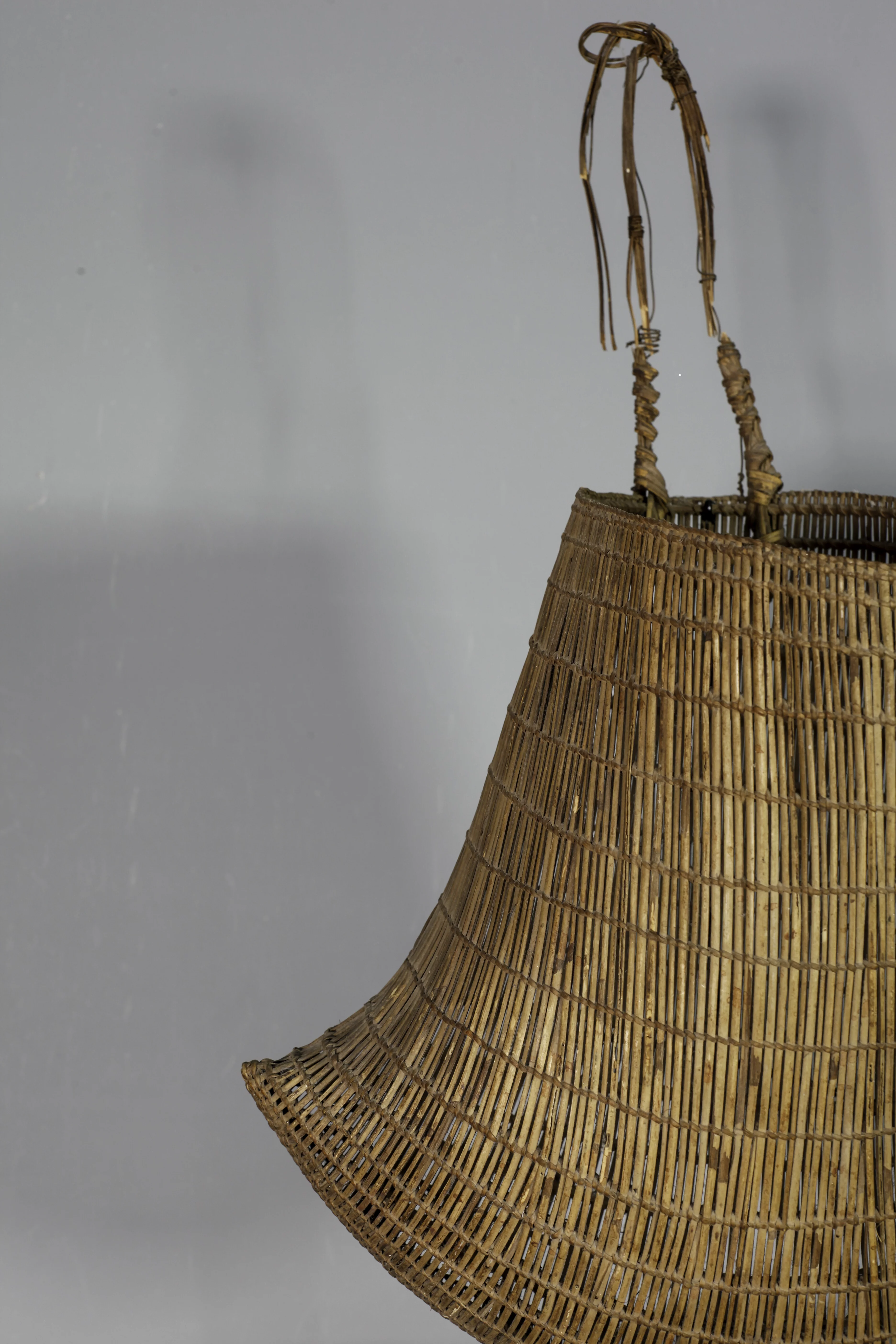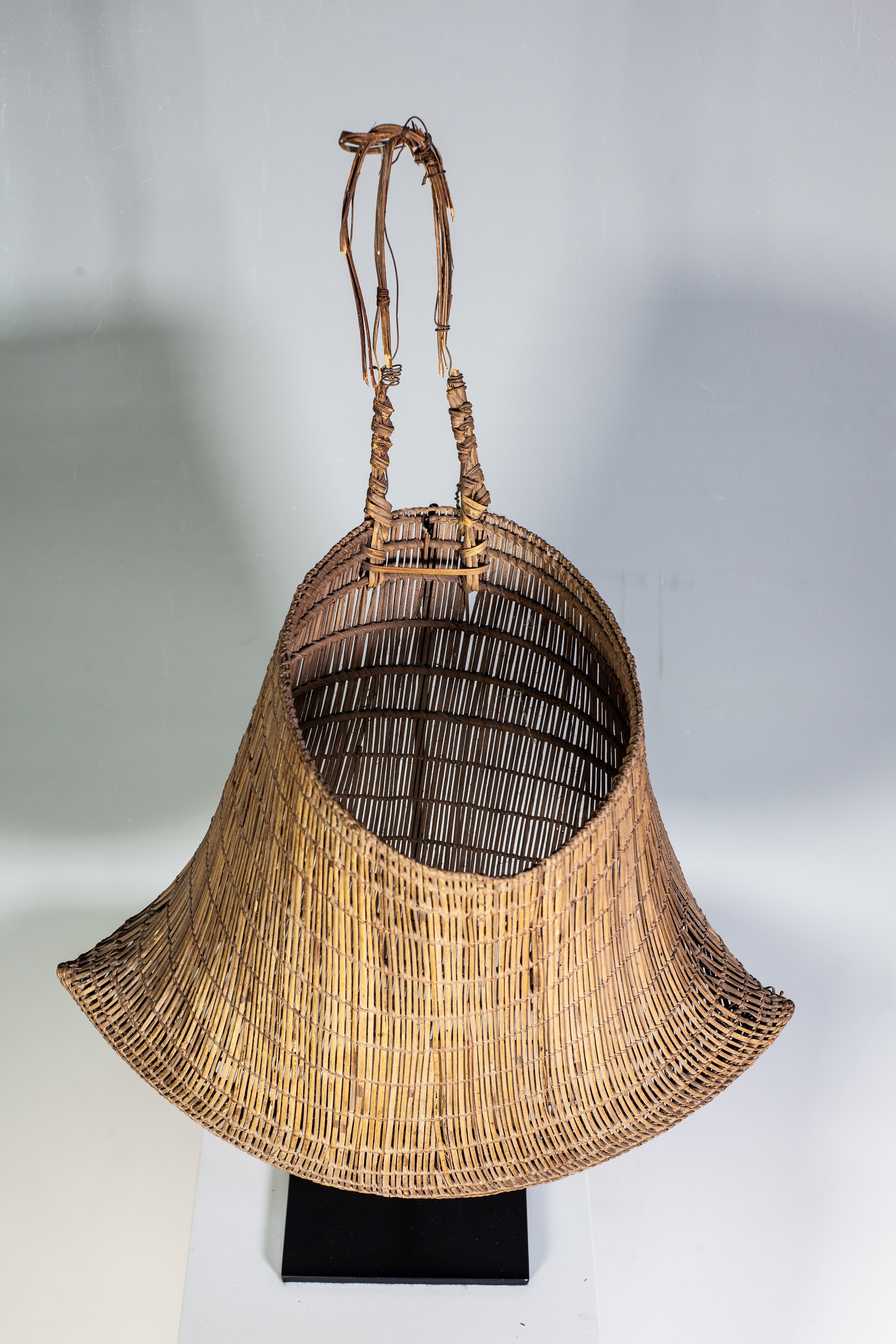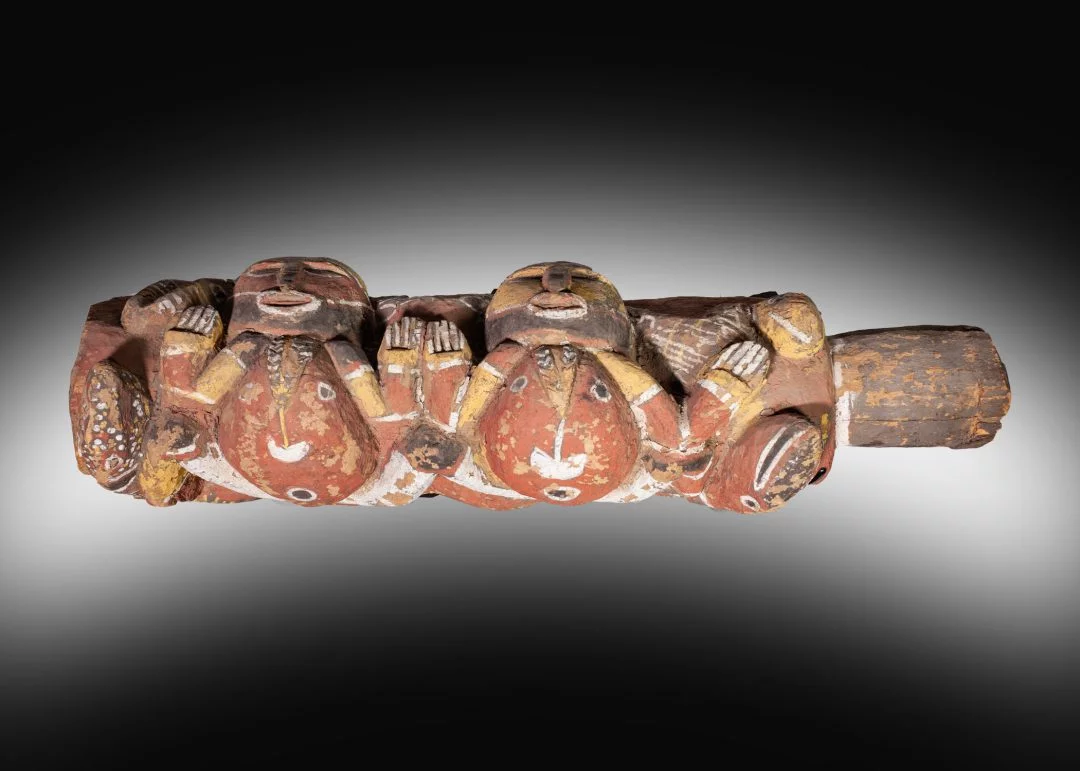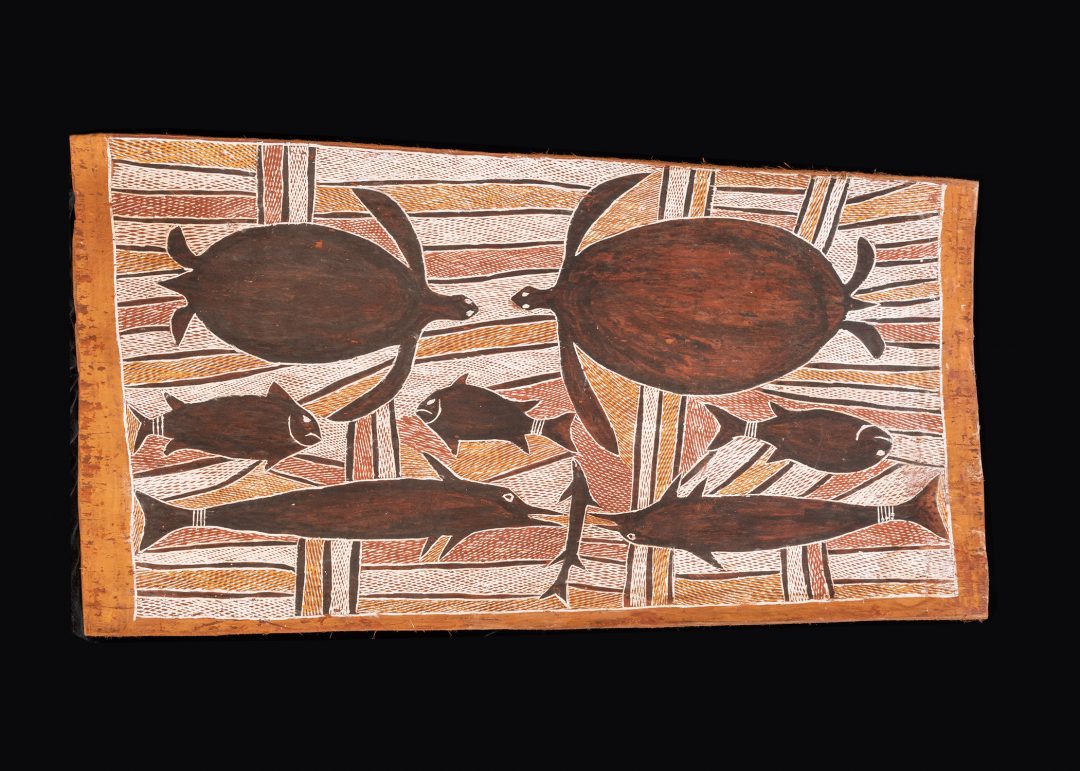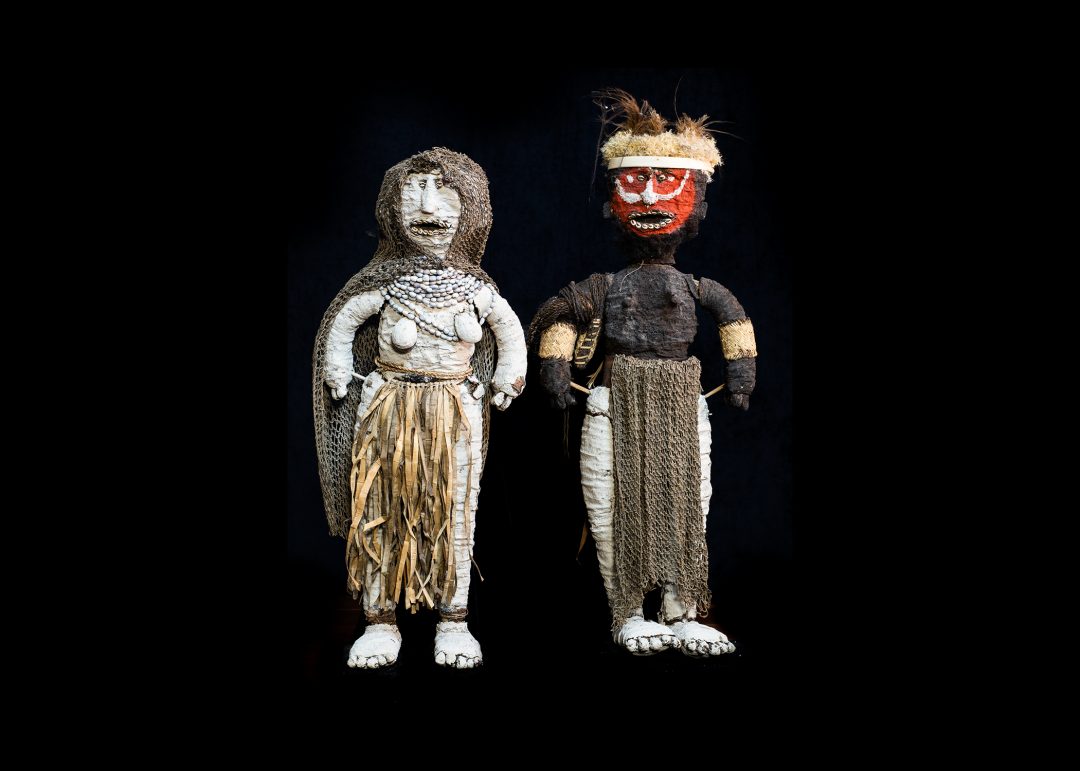Early Queensland Aboriginal bicornual Basket ”Jawun”
-
TitleEarly Queensland Aboriginal bicornual Basket ''Jawun"
-
LocationNorth East Queensland
-
Datelate 19th early 20th century
- Size43cm (L) x 37cm (W) x 28cm (H)
-
PricePrice on application
A bicornual open waive basket known as “jawun” , from north east Queensland Circa late 19th early 20th century,
This is a very similar example to the one in th National Gallery of Australia’s collection which included the following information. “A unique and essential item of rainforest life was an elegantly constructed, crescent-shaped, woven basket. These beautifully crafted baskets were made from lengths of split lawyer cane, a prolific climbing plant found throughout the rainforest. The lawyer cane was not collected until needed because the basket-maker had to complete the task within five days—after this time the cane could no longer be made pliable by soaking. The distinct crescent shape of the basket was formed by stringing the ends of the split lawyer cane like a bow and attaching it by top-stitching to the inner surface. Two handles, one small, one long, were fitted to the mouth and held there by tightly woven thin strips of split lawyer cane. Undecorated crescent-shaped baskets were used to gather and leach foods. … In flood times women caught large quantities of small fish with these baskets. Very large baskets were used to ferry goods—and also children—across rivers. Crescent-shaped bark baskets were also made for carrying honey or water. (Kate Khan, ‘Adornments and design in north Queensland: A view from the nineteenth century’ in Oxford Companion to Aboriginal Art and Culture, 2000, p.181)
Provenance
Originally bought in 1920 from the Charles Glover collection. Then held in private museum .
Displayed on a custom metal stand. Basket size, 43cm wide x 37 cm high (excluding handle) x 28cm dia basket opening
SOLD
A bicornual open waive basket known as “jawun” , from north east Queensland Circa late 19th early 20th century,
This is a very similar example to the one in th National Gallery of Australia’s collection which included the following information. “A unique and essential item of rainforest life was an elegantly constructed, crescent-shaped, woven basket. These beautifully crafted baskets were made from lengths of split lawyer cane, a prolific climbing plant found throughout the rainforest. The lawyer cane was not collected until needed because the basket-maker had to complete the task within five days—after this time the cane could no longer be made pliable by soaking. The distinct crescent shape of the basket was formed by stringing the ends of the split lawyer cane like a bow and attaching it by top-stitching to the inner surface. Two handles, one small, one long, were fitted to the mouth and held there by tightly woven thin strips of split lawyer cane. Undecorated crescent-shaped baskets were used to gather and leach foods. … In flood times women caught large quantities of small fish with these baskets. Very large baskets were used to ferry goods—and also children—across rivers. Crescent-shaped bark baskets were also made for carrying honey or water. (Kate Khan, ‘Adornments and design in north Queensland: A view from the nineteenth century’ in Oxford Companion to Aboriginal Art and Culture, 2000, p.181)
Provenance
Originally bought in 1920 from the Charles Glover collection. Then held in private museum .
Displayed on a custom metal stand. Basket size, 43cm wide x 37 cm high (excluding handle) x 28cm dia basket opening
SOLD
